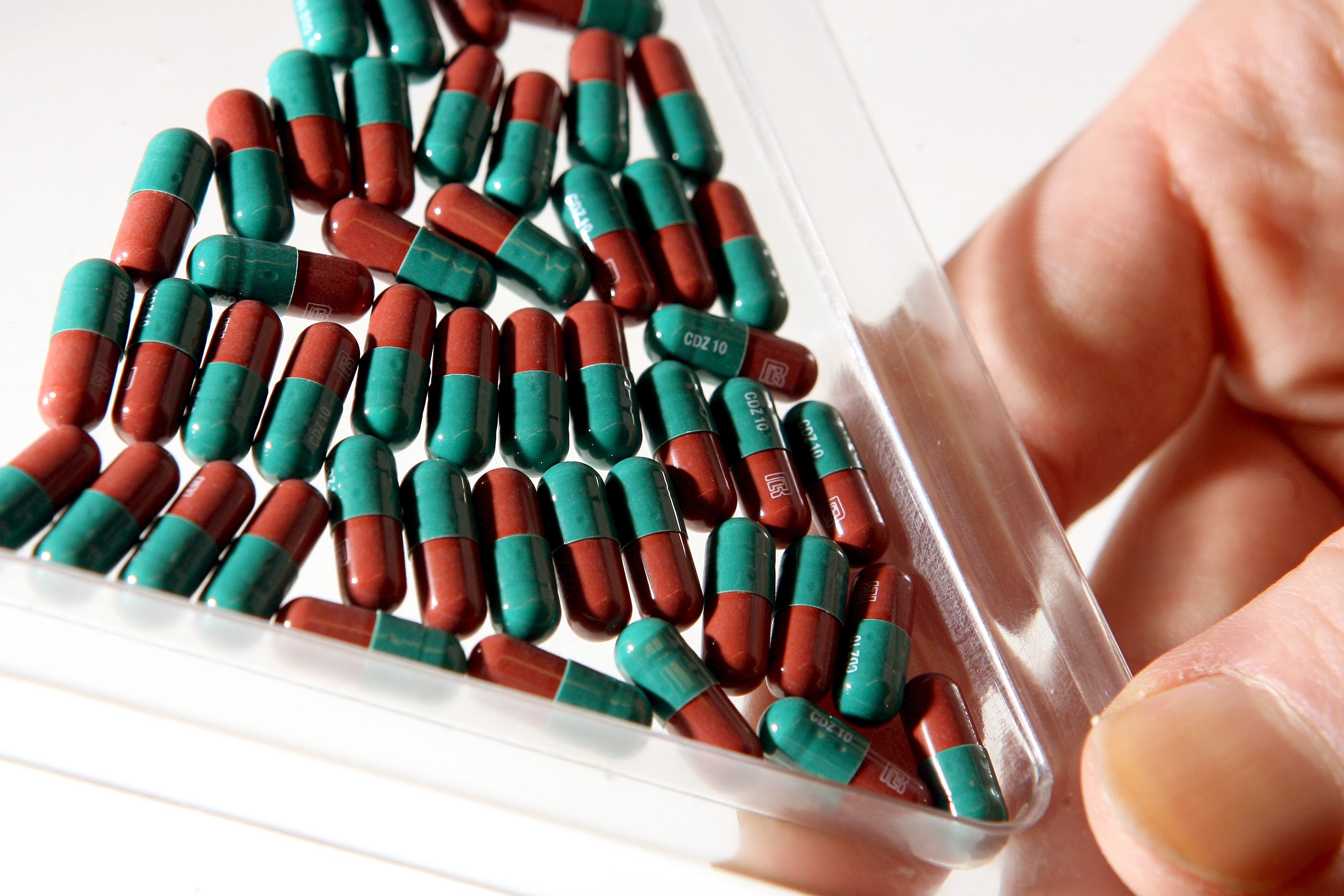Antibiotics and resistance ‘two-way street’ between animals and humans – study
Experts across the world are determined to slow down the rise in AMR, which is partly fuelled by unnecessary use of antibiotics.

Your support helps us to tell the story
From reproductive rights to climate change to Big Tech, The Independent is on the ground when the story is developing. Whether it's investigating the financials of Elon Musk's pro-Trump PAC or producing our latest documentary, 'The A Word', which shines a light on the American women fighting for reproductive rights, we know how important it is to parse out the facts from the messaging.
At such a critical moment in US history, we need reporters on the ground. Your donation allows us to keep sending journalists to speak to both sides of the story.
The Independent is trusted by Americans across the entire political spectrum. And unlike many other quality news outlets, we choose not to lock Americans out of our reporting and analysis with paywalls. We believe quality journalism should be available to everyone, paid for by those who can afford it.
Your support makes all the difference.Antibiotic consumption and antimicrobial resistance (AMR) is a two-way street between animals and humans, researchers have suggested.
The findings reveal the use of antibiotics in animals like cattle, pigs and chickens is associated with AMR in humans and using antibiotics in humans is linked with resistance in animals.
Experts across the world are determined to slow down the rise in AMR, which is partly fuelled by unnecessary use of antibiotics.
AMR occurs when bacteria, viruses, fungi and parasites mutate and no longer respond to the medicines – including antibiotics – designed to treat them.
This makes illnesses hard to treat and increases the risk of diseases spreading, causing severe illness or death.
AMR is a ‘wicked problem’ as conflicting priorities exist amongst an intricate web of stakeholders
Researchers say the study highlights the urgent need for a strategy to tackle the spread of resistance, focusing on social development, poverty reduction and enforcing tighter rules on the use of antibiotics.
Kasim Allel, lead author and associate research fellow in infectious disease epidemiology at the London School of Hygiene & Tropical Medicine (LSHTM), said: “AMR is a ‘wicked problem’ as conflicting priorities exist amongst an intricate web of stakeholders.
“A robust, cross-disciplinary and species approach for AMR surveillance and control, which is not limited to a human-centred perspective, should be embraced among decision-makers and local governments for better planetary health.”
AMR is a major threat to global health, with data suggesting resistant bacteria was responsible for 1.27 million deaths in 2019.
Incorrect use of antibiotics – which include antibiotics, antivirals and antifungals – is a key driver of the spread of AMR.
Increasing demands for animal-based food and products, as well as intricate and interlinked socioeconomic and environmental factors, also have an impact.
In the new study, an international team of researchers, including from LSHTM, investigated links between the global consumption of antibiotics and rates of AMR in humans and food-producing animals around 2018.
They also considered the influence of socioeconomic, health and environmental risk factors.
This bidirectionality in antibiotic consumption and resistance among humans and livestock uncovered by our analysis offers novel opportunities for mitigating resistance
The findings suggest greater consumption of antibiotics in animals is associated with an increased rate of AMR in food-producing animals, with higher rates of human consumption of antibiotics increasing the risk of AMR in humans.
According to the researchers, the paper also reveals that greater consumption of antibiotics by animals is associated with an increased risk of AMR in human disease – defined as critical priority by the World Health Organisation – while greater human consumption of antibiotics increases the risk of AMR in animals.
Despite recording low levels of antibiotic consumption, low and middle-income countries, notably in Asia (such as Bangladesh, China and India), had the highest rates of AMR in food-producing animals.
This suggests antibiotic consumption may be a secondary risk factor to the spread of AMR in certain parts of the world, the scientists say.
Socioeconomic factors, such as income inequality or death rates due to unsafe hygiene practices or heart problems, also increased AMR rates in humans.
Laith Yakob, senior author and Taught Programme co-director of the Faculty of Infectious and Tropical Diseases at LSHTM, said: “This bidirectionality in antibiotic consumption and resistance among humans and livestock uncovered by our analysis offers novel opportunities for mitigating resistance.
“For example, it highlights the potential for targeting single One-Health components with interventions but having system-wide impacts.
“Designing interventions around this holistic picture of resistance will be essential in tackling what has rapidly become one of the biggest threats to global health.
“Going forward, we recommend tighter country policies and regulations on antibiotic use and prescription among animals and humans, as well as improved governance, transparency and accountability, particularly among countries with the highest disease burdens.”
The findings are published in The Lancet Planetary Health.